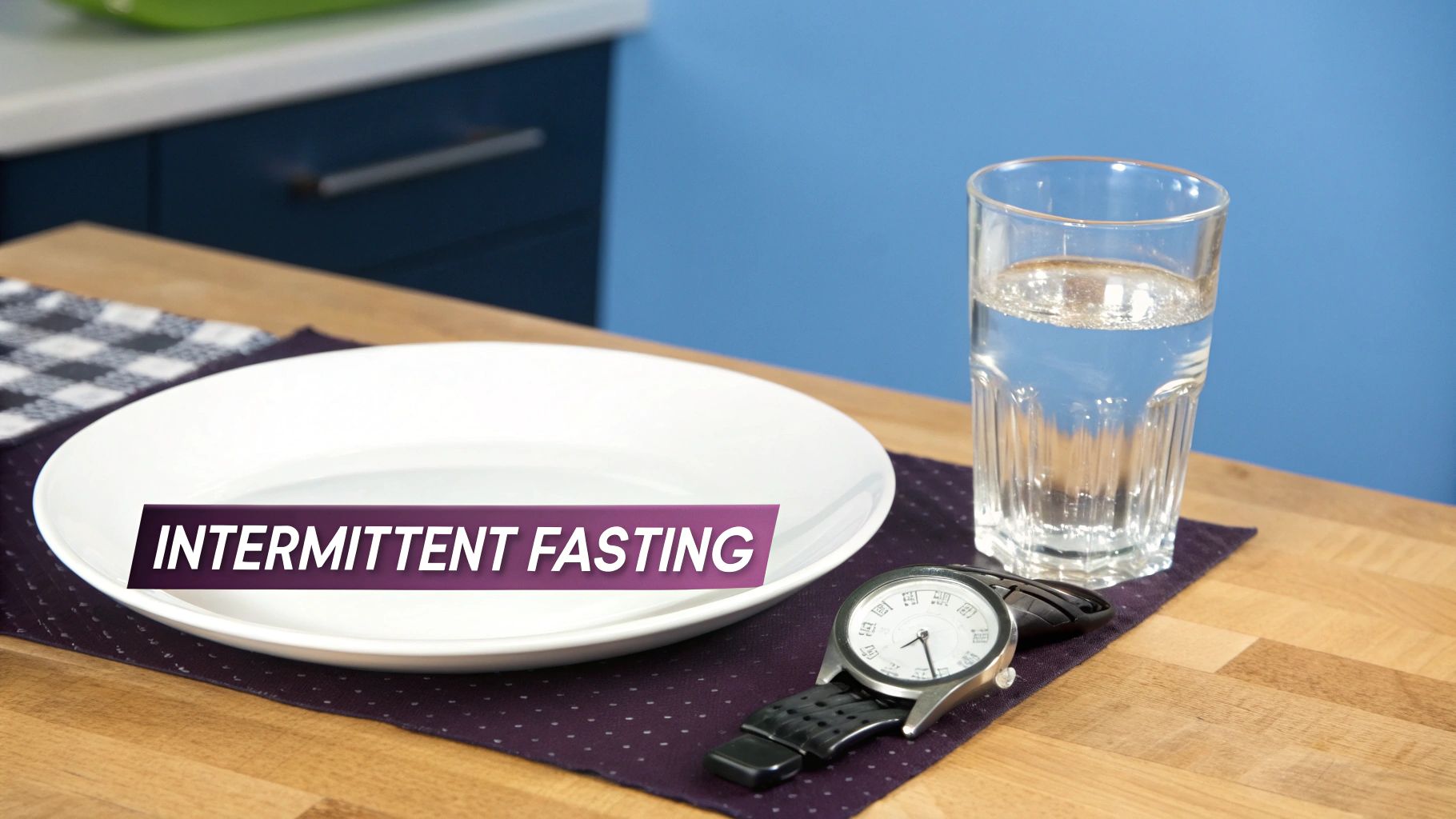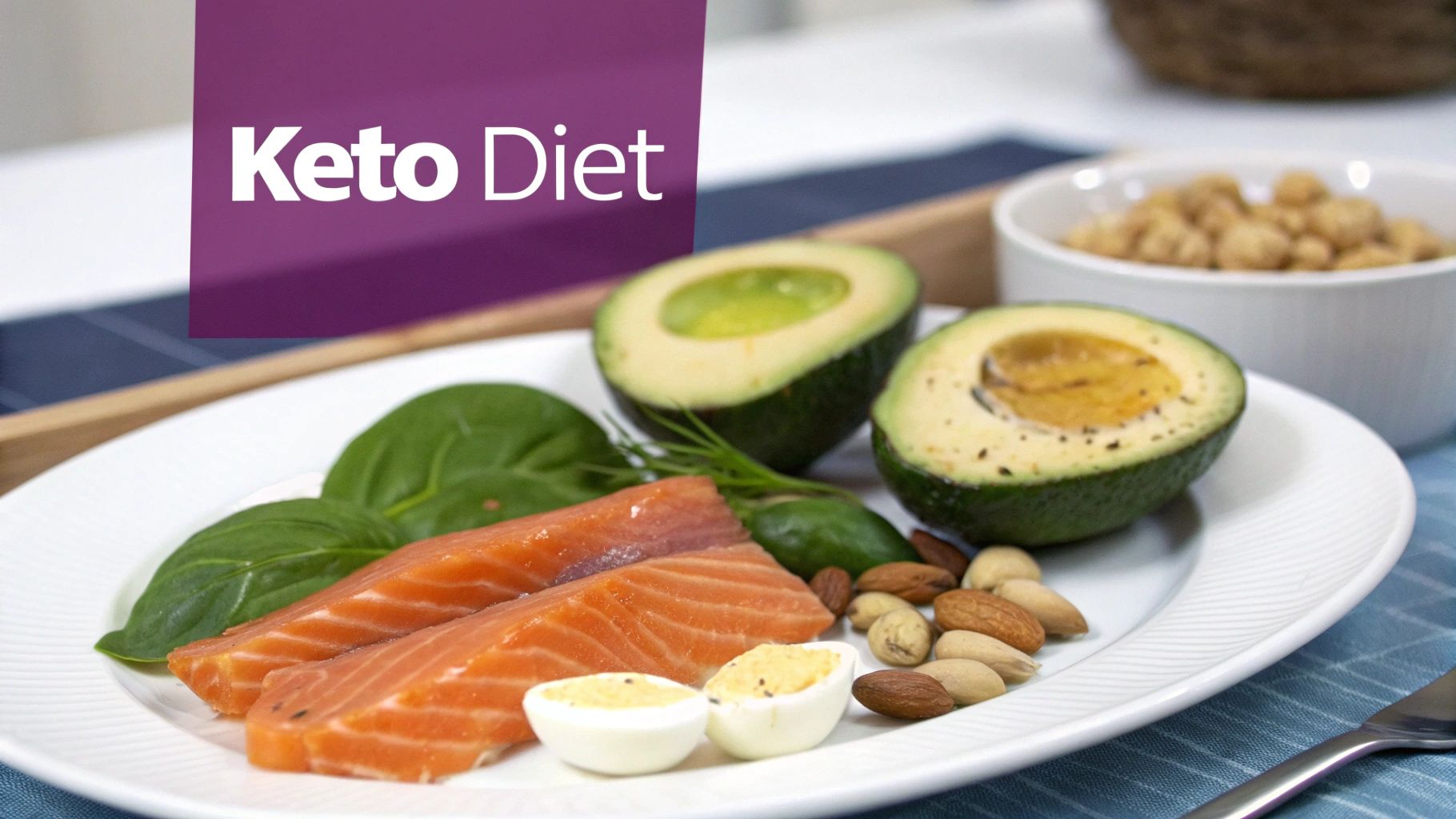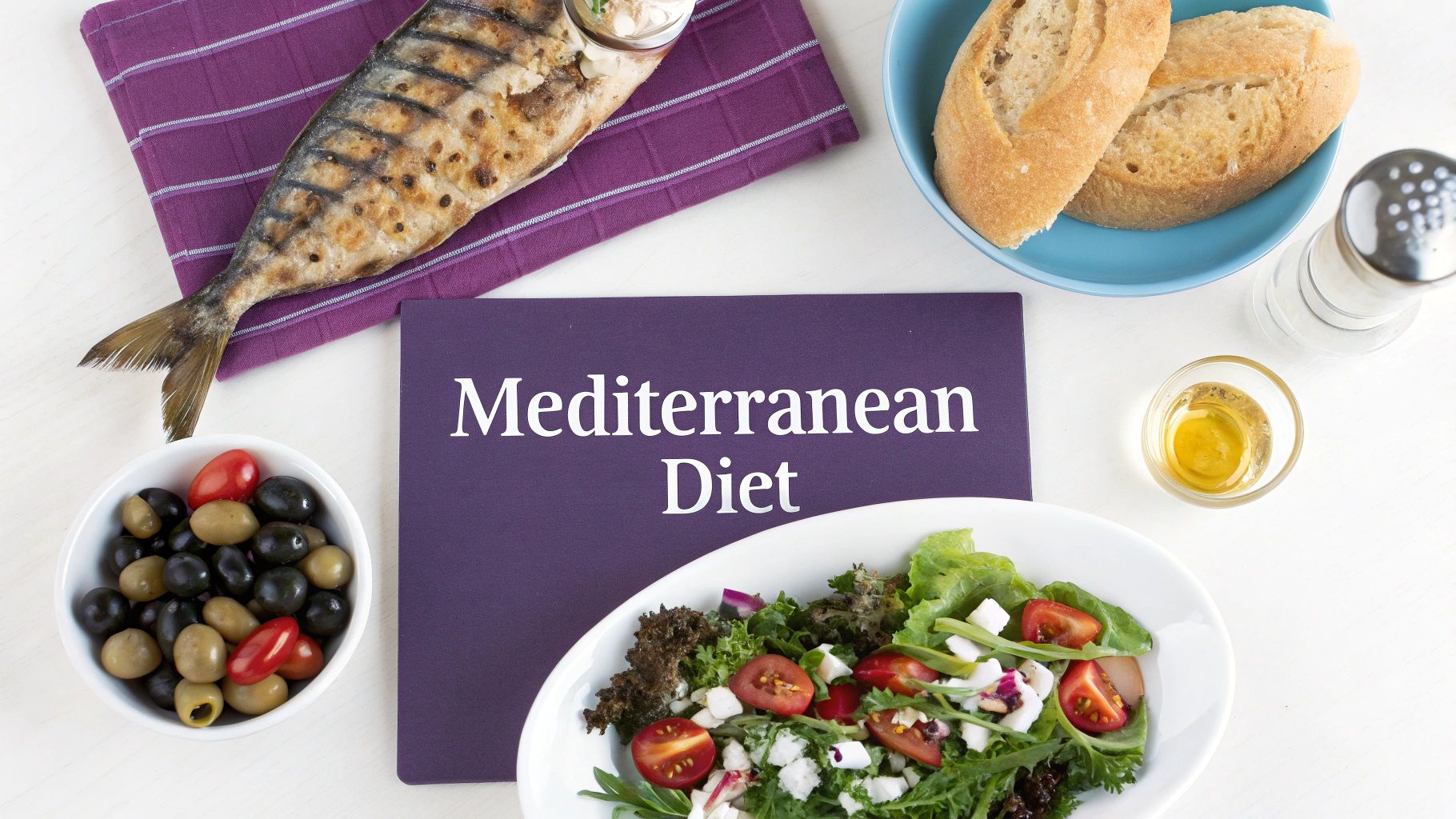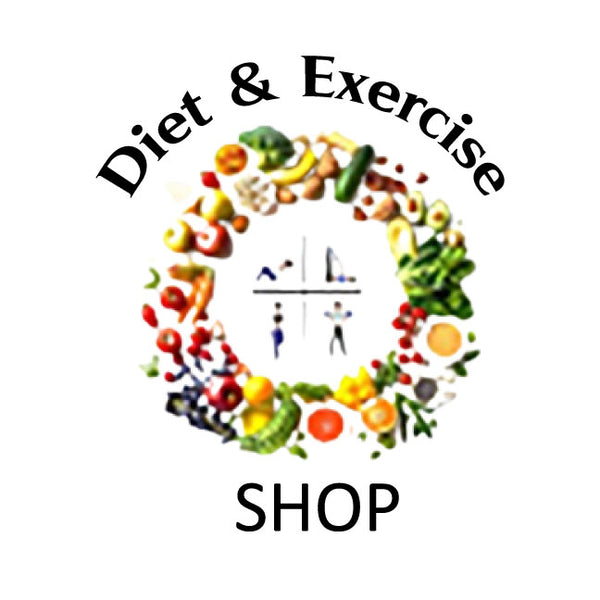
Best diet for weight loss: 7 Proven Plans
Finding the "best diet for weight loss" can feel like navigating a maze of trends. The truth? The best plan is one that fits your lifestyle, food preferences, and health goals. It’s about sustainability, not a quick fix.
This guide cuts through the noise. We'll break down popular weight loss strategies, from Intermittent Fasting to the Mediterranean Diet, explaining how they work and who they're for.
We'll also pair each diet with exercise habits to create a complete strategy. To track your progress, a tool like the Smart Body Fat Scale is invaluable. It provides comprehensive data to measure what matters, helping you stay motivated and on course. Let’s find the right plan for you.
1. Intermittent Fasting (IF)
Intermittent fasting (IF) is an eating pattern, not a traditional diet. It focuses on when you eat, not what you eat, by cycling between periods of fasting and eating. This simple shift helps reduce overall calorie intake and improve metabolic health.

During a fast, your body uses its sugar stores and starts burning fat for energy. This structured eating can lead to consuming fewer calories without the mental stress of constant tracking.
How Intermittent Fasting Works
There are several popular IF methods, making it adaptable to different lifestyles.
- The 16/8 Method: Fast for 16 hours and eat within an 8-hour window. For many, this just means skipping breakfast.
- The 5:2 Diet: Eat normally five days a week and restrict calories to 500-600 on two non-consecutive days.
- Eat-Stop-Eat: Involves a full 24-hour fast once or twice per week.
Practical Tips for Success
Stay well-hydrated with water, black coffee, or unsweetened tea during your fasts to manage hunger. When you break your fast, prioritize nutrient-dense foods like proteins and healthy fats.
To preserve muscle, combine IF with resistance training. A great way to do this at home is with a set of high-quality resistance bands, which allow you to perform strength exercises anywhere. For workout tutorials, check out the Diet & Exercise YouTube channel.
2. Ketogenic Diet (Keto)
The ketogenic (keto) diet is a very low-carb, high-fat plan that shifts your body into a state called ketosis. In ketosis, your body burns fat for fuel instead of carbs, turning you into a fat-burning machine.

The diet typically consists of 70% fat, 25% protein, and only 5% carbs. This severe carb restriction forces the liver to produce ketones from fat, which fuel the body and brain.
How the Ketogenic Diet Works
The core principle is to starve the body of carbs, forcing it to use fat for energy. Many people report reduced hunger due to the satiating effects of fat and protein.
- Standard Ketogenic Diet (SKD): The most common version with a strict low-carb, high-fat ratio.
- Cyclical Ketogenic Diet (CKD): Involves periods of higher-carb refeeds, like five keto days followed by two high-carb days.
- Targeted Ketogenic Diet (TKD): Allows adding carbs around workouts to boost performance.
Practical Tips for Success
Transitioning into ketosis can be tough. Manage electrolytes like sodium and potassium to avoid the "keto flu." Focus on whole foods like meat, fish, eggs, and non-starchy vegetables.
Meal planning is key. For simple and delicious ideas, explore our guide to keto diet meal prep. Pairing keto with consistent exercise will maximize fat loss while preserving muscle.
3. Mediterranean Diet
The Mediterranean Diet is a lifestyle inspired by the eating habits of countries like Greece and Italy. It emphasizes whole foods, healthy fats like olive oil, and lean proteins, promoting steady, sustainable weight loss without severe restriction.

This eating pattern is rich in vitamins, minerals, and fiber, which helps control calorie intake naturally. Studies have linked it to significant health benefits, including heart health and sustainable weight management.
How the Mediterranean Diet Works
The diet prioritizes nutrient-dense foods while limiting processed items and red meat.
- Foundation: Abundant fruits, vegetables, whole grains, and legumes.
- Primary Fat Source: Extra virgin olive oil.
- Protein: Fish and poultry are consumed in moderation.
- Dairy: Cheese and yogurt are included in moderate amounts.
Practical Tips for Success
Adopting this lifestyle is about simple swaps. Make olive oil your primary cooking fat and eat a variety of colorful vegetables with every meal. Incorporate fatty fish like salmon two to three times per week.
Combine this diet with regular physical activity for the best results. A simple jump rope workout is a fantastic way to boost cardiovascular health. Explore effective fitness plans on the Diet & Exercise YouTube channel.
4. Low-Fat Diet (DASH Diet)
The DASH (Dietary Approaches to Stop Hypertension) diet, designed to lower blood pressure, is also a highly effective approach to weight management. It emphasizes whole foods while limiting sodium, saturated fats, and added sugars.
This balanced framework promotes healthy eating habits over extreme restriction. By focusing on low-fat dairy, lean proteins, and plant-based foods, you naturally reduce your intake of high-calorie processed items.
How the DASH Diet Works
The DASH diet provides clear guidelines on servings from various food groups, making it easy to follow.
- Whole Grains: 6-8 servings per day.
- Fruits & Vegetables: 8-10 servings per day.
- Lean Protein: 6 or fewer servings per day.
- Low-Fat Dairy: 2-3 servings per day.
- Nuts, Seeds, & Legumes: 4-5 servings per week.
Practical Tips for Success
Start by increasing your fruit and vegetable intake at every meal. Choose lean cuts of meat and use low-fat cooking methods like grilling or baking.
Read food labels to identify hidden sodium and added sugars. To support your weight loss, pair the DASH diet with regular cardiovascular exercise. For structured workout routines, explore the guided programs on the Diet & Exercise YouTube channel.
5. Calorie Deficit / Flexible Dieting (IIFYM)
All successful weight loss comes down to a simple principle: a calorie deficit. This is the foundation of flexible dieting, or IIFYM (If It Fits Your Macros). Instead of restricting foods, you focus on hitting daily calorie and macronutrient targets.
This approach gives you the freedom to enjoy foods you love while still losing fat. By tracking protein, carbs, and fats, you ensure your body gets the right fuel for muscle preservation and energy. A kitchen food scale is an essential tool here, ensuring you accurately track your intake for predictable results.
How Flexible Dieting Works
The principle is simple: energy balance determines weight change.
- Establish a Calorie Deficit: Calculate your Total Daily Energy Expenditure (TDEE) and subtract 300-500 calories for a sustainable starting point.
- Set Your Macros: Set targets for protein, carbs, and fat within your calorie goal. Prioritize high protein to promote fullness.
- Track Your Intake: Use a food scale and a tracking app to log your daily consumption.
Practical Tips for Success
Consistency and accuracy are key. Prioritize protein, aiming for 0.8-1 gram per pound of body weight to stay full and protect muscle.
While IIFYM allows treats, most of your diet should come from nutrient-dense whole foods. Combine this strategy with resistance training to maximize fat loss. For a complete guide, learn how to calculate macros on dietexerciseshop.com.
6. Paleo Diet
The Paleo diet, or "caveman diet," is based on the eating habits of our hunter-gatherer ancestors. It naturally eliminates high-calorie processed foods, refined sugars, and grains.
This approach emphasizes lean proteins, fruits, vegetables, nuts, and seeds. By removing dairy, grains, and legumes, the diet can reduce inflammation and improve digestive health for many.
How The Paleo Diet Works
The core rule is simple: if a caveman couldn’t eat it, neither should you.
- What to Eat: Focus on grass-fed meats, fish, eggs, fresh vegetables, fruits, and nuts.
- What to Avoid: Eliminate all grains, legumes, dairy products, refined sugars, and highly processed foods.
Practical Tips for Success
Meal prepping on weekends makes the Paleo lifestyle manageable. Focus on incorporating a wide variety of colorful vegetables to get a broad spectrum of nutrients.
Combine the Paleo diet with a consistent strength training routine. To enhance your workouts at home, consider an abdominal wheel to build core strength, which is fundamental for almost every exercise. Learn how to structure your workouts with tutorials on the Diet & Exercise YouTube channel.
7. Weight Watchers (WW) - Points System
Weight Watchers, now WW, uses a science-backed Points system that assigns a number to foods based on their nutritional content. This flexible approach guides members toward healthier choices without forbidding foods.
The system encourages foods that are lower in added sugars and saturated fats, and higher in protein. The program combines tracking with strong community support to build lasting habits.
How the WW Points System Works
Each member gets a personalized daily and weekly Points budget to stay within.
- PersonalPoints™ Engine: Calculates your unique budget based on age, weight, height, and sex.
- ZeroPoint™ Foods: A list of foods that don’t need to be tracked, including non-starchy vegetables, fruits, and lean proteins.
- Tracking and Support: Members use the WW app to track intake and activity and can access virtual or in-person workshops.
Practical Tips for Success
Consistency is key. Build your meals around the ZeroPoint foods list and use the WW app diligently to track everything you consume.
Engaging with the WW community provides motivation and support. To enhance results, pair the WW plan with a consistent exercise routine. Explore workout ideas on the Diet & Exercise YouTube channel.
8. Vegan Diet
The vegan diet eliminates all animal products, including meat, dairy, and eggs. A whole-food vegan diet can be highly effective for weight loss due to its high fiber content and the lower calorie density of plant-based foods.
Focusing on fruits, vegetables, whole grains, and legumes nourishes your body with nutrient-dense foods. The key is to prioritize whole foods over processed vegan junk food.
How The Vegan Diet Works
A vegan diet aids weight loss in several ways. The high fiber content keeps you full, and plant-based foods are often less calorically dense, allowing for larger portions with fewer calories.
- Elimination of High-Fat Animal Products: Naturally reduces saturated fat intake.
- Increased Fiber and Water Content: Adds volume to meals without adding excess calories.
- Improved Gut Microbiome: A diet rich in plant fibers can foster a healthy gut.
Practical Tips for Success
Plan meals to ensure you meet all your nutritional needs. Get enough protein from sources like lentils, beans, and tofu.
It is crucial to supplement with Vitamin B12, which is not found in plant foods. Pay attention to your intake of iron and calcium as well. For high-protein vegan meal ideas, explore the guides on the Diet & Exercise YouTube channel.
9. Whole30
The Whole30 program is a 30-day reset designed to change your relationship with food. It's a strict elimination diet that removes sugar, alcohol, grains, legumes, and dairy, focusing entirely on whole, unprocessed foods.
This 30-day period helps you identify which foods may be negatively impacting your health and energy. The strict rules encourage mindful eating and a greater awareness of food quality.
How Whole30 Works
For 30 consecutive days, you avoid a specific list of foods entirely, with no cheat days.
- Elimination Phase: You eat meat, seafood, eggs, vegetables, and fruit. You must avoid all added sugars, alcohol, grains, legumes, and dairy.
- Reintroduction Phase: After 30 days, you strategically reintroduce food groups one by one to observe how your body reacts.
Practical Tips for Success
Success on Whole30 depends on preparation. Plan your meals for the week and dedicate time to food prep.
Focus on non-scale victories like improved energy and better sleep. For guidance on structuring workouts that complement this eating style, our Diet & Exercise YouTube channel has videos dedicated to building strength.
10. Portion Control / Mindful Eating
Portion control and mindful eating focus on how and how much you eat. This approach is about awareness, not restriction, helping you listen to your body’s natural hunger and fullness cues.
This method helps you develop a healthier relationship with food. By paying attention to your meals, you naturally moderate your calorie intake without the stress of counting. A set of portion control containers can make this practice easier by providing clear visual guides for serving sizes.
How Portion Control & Mindful Eating Work
The core principle is to become more attuned to your body's needs.
- Portion Control: Involves consciously choosing smaller serving sizes to prevent overconsumption.
- Mindful Eating: Is the practice of being fully present during meals, savoring each bite and noticing how food makes you feel.
- Hunger & Fullness Scale: You learn to identify true physical hunger and stop eating when you feel comfortably satisfied.
Practical Tips for Success
Start by using smaller plates and bowls. This visual trick can help you feel satisfied with less food.
When you eat, remove distractions like your phone or TV. Eat slowly, putting your fork down between bites. Combine this mindful approach with regular physical activity. For exercise ideas, explore the routines on our Diet & Exercise YouTube channel.
Top 10 Diets for Weight Loss Comparison
| Diet | Implementation Complexity 🔄 | Resource Requirements & Cost ⚡ | Expected Outcomes 📊⭐ | Ideal Use Cases 💡 | Key Advantages |
|---|---|---|---|---|---|
| Intermittent Fasting (IF) | Low–Moderate — set and adapt eating windows | Minimal — no special foods; hydration; optional tracking | Moderate weight loss (3–8% over 8–24 wk); improved insulin sensitivity — ⭐⭐⭐ | Busy schedules, want simple routine; combine with resistance training | Flexible timing; cost-effective; metabolic benefits |
| Ketogenic Diet (Keto) | High — strict carb limit and macro tracking | Moderate–High — high-fat foods, electrolyte management, monitoring | Rapid initial weight loss; appetite suppression; metabolic shift — ⭐⭐⭐⭐ | Rapid fat loss goals; therapeutic contexts (under medical supervision) | Fast results; reduced hunger; steady energy from ketones |
| Mediterranean Diet | Low — food-quality focus, not strict rules | Moderate — emphasis on olive oil, fish, fresh produce | Steady sustainable weight loss (≈1–2 lb/wk); strong cardiometabolic benefits — ⭐⭐⭐⭐ | Long-term health, cardiovascular risk reduction, everyday eating | Highly sustainable; well-researched; enjoyable foods |
| Low-Fat / DASH | Moderate — balanced plans and portion guidance | Moderate — fruits, vegetables, low-fat dairy; possible higher grocery cost | Blood pressure reduction; steady weight loss; improved cholesterol — ⭐⭐⭐ | Hypertension management, family-style meals, heart health | Proven BP/heart benefits; clear guidelines; flexible |
| Calorie Deficit / Flexible Dieting (IIFYM) | Moderate–High — requires consistent tracking and adjustments | Low–Moderate — apps, food scale; minimal extra cost | Reliable weight loss (≈1–2 lb/wk when adhered); preserves muscle with protein target — ⭐⭐⭐⭐ | Personalized weight loss, athletes/body composition goals, those who want flexibility | Highly flexible; evidence-based; works with any food preference |
| Paleo Diet | Moderate — excludes grains/legumes/dairy; meal planning needed | Moderate–High — emphasis on quality meats and produce | Initial weight loss common; comparable to other restrictive diets — ⭐⭐⭐ | Those avoiding processed foods or gluten; fitness-focused individuals | Eliminates ultra-processed foods; high protein & satiety |
| Weight Watchers (WW) - Points | Low — structured program; app/coaching simplifies choices | Moderate — monthly membership; app and optional meetings | Consistent weight loss (avg. 5–10 lb over 3–12 months) with maintenance support — ⭐⭐⭐⭐ | People who benefit from accountability, coaching and social support | Strong behavioral support; flexible food choices; proven outcomes |
| Vegan Diet | Moderate — planning needed to meet nutrients (B12, iron, omega‑3) | Variable — whole-food focus may lower cost but supplements likely | Weight loss potential and cardiometabolic benefits when whole-food based — ⭐⭐⭐ | Ethical/environmental motives; heart-health focused individuals | Lower saturated fat; high fiber; environmental/ethical benefits |
| Whole30 | High — strict 30-day elimination; no cheating | Moderate–High — whole foods, time for prep, higher grocery cost | Rapid short-term weight loss common (5–15 lb); food-sensitivity insights; long-term effects unclear — ⭐⭐⭐ | Short-term reset; identifying food intolerances; behavioral reset | Clear rules; reduces processed food intake; strong community support |
| Portion Control / Mindful Eating | Moderate — habit training and psychological work | Low — time and practice; optional coaching or journaling | Slow steady weight loss (≈0.5–1.5 lb/wk); improved relationship with food — ⭐⭐⭐ | Long-term maintenance, those wanting sustainable behavior change | Sustainable; no foods forbidden; improves satiety and awareness |
Your Next Step: Choosing a Plan and Taking Action
The "best diet for weight loss" is a myth; the most effective plan is a personalized fit. Success depends on sustainability. Choose an eating pattern you can integrate into your life for the long haul.
Synthesizing the Information for Your Lifestyle
Consider these key questions to narrow down your options:
- Social and Family Life: Do you dine out often? A flexible approach like the Mediterranean diet or IIFYM might be easier to adapt than a strict plan like Whole30.
- Cooking Habits: Do you prefer simple meals? A portion-controlled approach can be built around simple staples, while Keto may require more dedicated cooking.
- Personal Health Profile: Do you have specific health concerns? The DASH diet is designed for heart health. Always consult a healthcare professional before making significant dietary changes.
The Crucial Role of Exercise in Your Weight Loss Journey
Diet drives weight loss, but exercise transforms your body. Combining nutrition with fitness accelerates fat loss, builds metabolism-boosting muscle, and improves your overall health.
A good fitness plan includes both cardio and strength training. You don't need a gym; simple tools can create a powerful home workout. Incorporating resistance bands into squats can increase the challenge, and a quality jump rope offers a great cardio workout in minutes.
For visual guides on how to combine these exercises with your diet, our Diet & Exercise YouTube channel offers tutorials for all fitness levels.
Taking Your First Step Today
Progress begins with a single action. Don't try to implement a complex diet overnight.
Actionable Tip: Pick one principle from the diet that resonates most and apply it for the next three days. If you like the Mediterranean diet, add a large salad to your lunch. If IF seems appealing, push your first meal back by one hour.
This small-wins approach builds momentum. Choose your path, set a realistic goal, and start today.
Ready to equip your home for success? The right tools make sticking to your fitness goals infinitely easier. The premium resistance bands, jump ropes, and workout gear from Diet and Exercise are designed to support your weight loss journey by making effective exercise accessible and convenient. Visit dietexerciseshop.com to find the perfect equipment to complement your new diet and accelerate your results.
